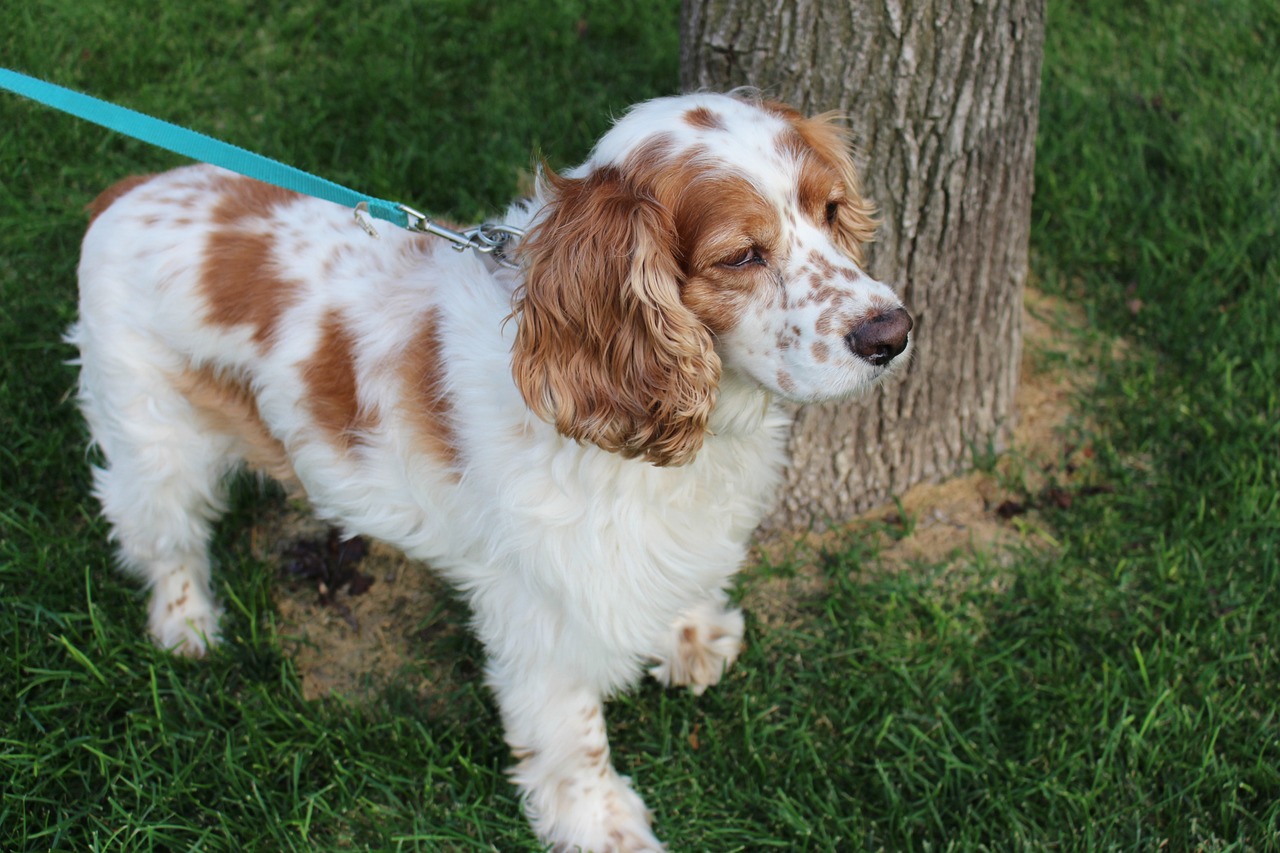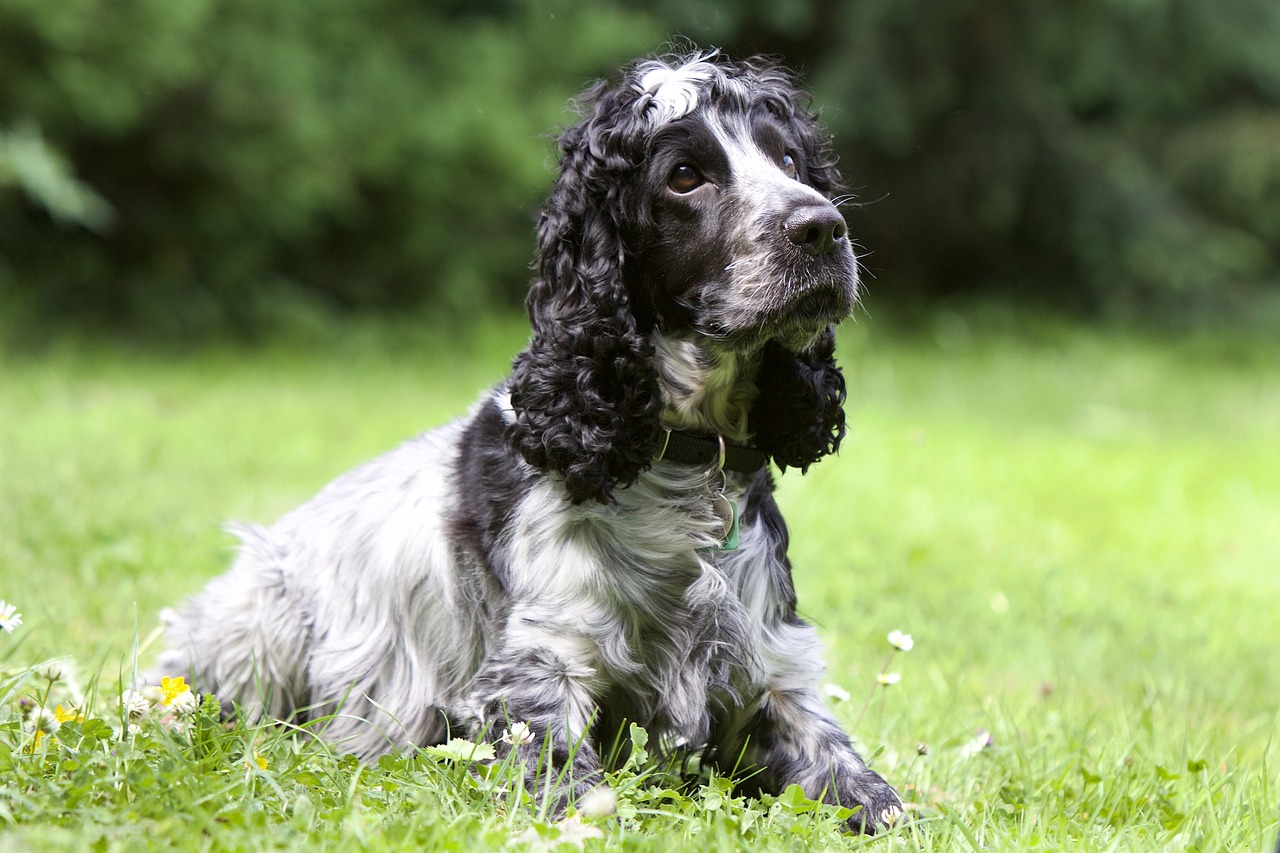[ad_1]
The Cocker Spaniel, with its soulful eyes, lush coat, and cheerful disposition, embodies a breed rich in history and versatility. Tracing its lineage back several centuries in England, the Cocker Spaniel originally served as a hunting dog, specifically bred to flush woodcock from dense brush, which is how it earned its name. This breed’s journey from the English countryside to becoming one of the most beloved companion dogs in the world is a fascinating tale of evolution, both in form and function. Over the years, the Cocker Spaniel has split into distinct American and English varieties, each with unique characteristics but sharing the same foundation of affectionate nature and sporting prowess. This article aims to explore the origins, historical roles, and development of the Cocker Spaniel, shedding light on how this breed has become a favorite in the show ring and the hearts of dog lovers everywhere.

The Early Beginnings
The history of the Cocker Spaniel dates back to the 14th century in England, with its ancestors being used as hunting dogs for small game, particularly woodcock, hence the breed’s name. These early spaniels were highly valued for their ability to work in dense underbrush, their keen nose, and their enthusiastic retrieval abilities. Spaniels were categorized by their size and the type of game they hunted, with the smaller “cocking” or “cocker” Spaniels specializing in woodcock. The breed’s agility, stamina, and compact size made it ideal for flushing and retrieving games in the challenging terrain of the English countryside.
Development and Recognition
The Cocker Spaniel was one of the first breeds to be recognized by the Kennel Club in the UK, established in the late 19th century. As the breed gained popularity, it began to diverge into the American and English types, largely due to differences in breeding preferences in the United States and England. The American Cocker Spaniel, bred for a slightly smaller size and a more refined head and coat, was recognized as a separate breed by the American Kennel Club in 1946. The English Cocker Spaniel retained more of the original hunting capabilities and physique. Both varieties excel in the field and the show ring, with their distinct looks and shared heritage.
The Cocker Spaniel in the Modern World
Today, Cocker Spaniels are cherished for their versatile nature, being both accomplished sporting dogs and affectionate family pets. Their gentle disposition, intelligence, and adaptability make them suitable for a variety of roles, including companionship, agility, and service work. The breed’s enduring popularity is a testament to its balanced temperament, striking appearance, and the joy it brings to households around the globe. The Cocker Spaniel continues to be a favorite in dog shows, with its beautiful coat, expressive eyes, and merry wag capturing the hearts of judges and spectators alike.
Health and Characteristics
Cocker Spaniels are known for their luscious coat, available in a wide range of colors and patterns, and their long, floppy ears. They require regular grooming to maintain their coat’s condition and to prevent ear infections, a common health issue in the breed. Cocker Spaniels are also prone to certain genetic conditions, such as hip dysplasia and eye disorders, making responsible breeding and health screening important. Despite these concerns, with proper care and regular veterinary check-ups, Cocker Spaniels can enjoy a healthy and active life.
Cocker Spaniel’s journey from a valued hunting companion in the English countryside to one of the world’s most beloved breeds is a story of adaptability, beauty, and unwavering companionship. Whether in the field, the show ring, or curled up beside their owners at home, Cocker Spaniels continue to enchant and enrich the lives of those around them. Their rich history and enduring appeal ensure that Cocker Spaniels will remain a cherished part of the canine world for generations to come.
Frequently Asked Questions About The History of Cocker Spaniels

1. What is the origin of the Cocker Spaniel?
The Cocker Spaniel originated in England, with its history dating back to the 14th century. Originally bred as hunting dogs, their primary role was to flush woodcock from dense brush, which is how they got their name. These early Spaniels were valued for their keen sense of smell, agility, and endurance, making them excellent companions for hunters. The breed’s ability to work in varied terrains and conditions solidified its status as a versatile hunting dog.
2. How did the Cocker Spaniel get its name?
The Cocker Spaniel was named after its exceptional skill in hunting woodcock, a type of game bird. The term “cocker” derives from their specialized role in “cocking” or flushing woodcock during hunting expeditions. This naming convention highlights the breed’s original purpose and distinguishes it from other types of spaniels bred for different games.
3. What are the differences between American and English Cocker Spaniels?
American and English Cocker Spaniels differ primarily in size, appearance, and temperament. The American Cocker Spaniel is smaller, with a more dome-shaped head, shorter muzzle, and more profuse coat. It was bred to have a sweeter expression and a slightly different personality, often being more laid-back. The English Cocker Spaniel retains more of the original hunting breed’s characteristics, being larger, with a longer muzzle and a less dense coat. Both share the breed’s friendly and affectionate nature but were bred for slightly different standards in the show ring.
4. When were Cocker Spaniels first recognized as a breed?
Cocker Spaniels were among the first breeds to gain official recognition by the Kennel Club in the United Kingdom in the late 19th century. This formal recognition marked the beginning of the breed’s standardization and differentiation from other types of spaniels. The American Kennel Club recognized the Cocker Spaniel as a separate breed in 1878, further solidifying its status in the canine world.
5. What roles have Cocker Spaniels played throughout history?
Cocker Spaniels have primarily served as hunting dogs, skilled in flushing and retrieving game. Their size and agility made them particularly adept at navigating dense underbrush to flush out birds. As the breed became more popular, Cocker Spaniels transitioned into companion animals and show dogs, celebrated for their beauty, temperament, and intelligence. They have also served as therapy dogs, given their gentle and affectionate nature.
6. How have Cocker Spaniels been portrayed in popular culture?
Cocker Spaniels have been a beloved part of popular culture, most famously represented by Lady in Disney’s “Lady and the Tramp.” Their friendly and loyal demeanor, along with their beautiful appearance, has made them a popular choice for families and individuals, both in media representations and real life. Cocker Spaniels frequently appear in advertisements, films, and literature, often symbolizing comfort, home, and friendship.
7. What are the key characteristics of Cocker Spaniels?
Key characteristics of Cocker Spaniels include their medium size, long, lush coat, and expressive eyes. They are known for their gentle and affectionate temperament, making them excellent companions. Cocker Spaniels are also intelligent and trainable, excelling in various dog sports and activities. Their coats come in a variety of colors and patterns, requiring regular grooming to maintain their appearance.
8. How has the Cocker Spaniel’s appearance changed over time?
Over time, the Cocker Spaniel’s appearance has evolved, particularly in the divergence between the American and English types. Selective breeding has accentuated certain physical traits, such as the American Cocker Spaniel’s more refined head and luxurious coat, and the English Cocker Spaniel’s athletic build suitable for fieldwork. Both varieties have retained the breed’s hallmark expressive eyes and joyful demeanor.
9. What health concerns are common in Cocker Spaniels?
Common health concerns in Cocker Spaniels include ear infections, due to their long, floppy ears, hip dysplasia, eye conditions such as progressive retinal atrophy, and heart disease. Their long coat can also predispose them to skin infections if not properly groomed. Responsible breeding and regular veterinary care can help manage these issues and ensure a healthy life for Cocker Spaniels.
10. How do Cocker Spaniels perform in dog sports and competitions?
Cocker Spaniels excel in dog sports and competitions, showcasing their agility, intelligence, and trainability. They perform well in obedience, agility, and tracking events, and their hunting background makes them natural competitors in field trials. Cocker Spaniels’ eagerness to please and work ethic contribute to their success in various canine activities.
11. What is the temperament of Cocker Spaniels?
Cocker Spaniels are known for their sweet, affectionate temperament. They are friendly, and outgoing, and enjoy being part of a family. Cocker Spaniels are adaptable to different living environments and are generally good with children and other pets. Their cheerful disposition and love of play make them endearing companions.
12. What grooming needs do Cocker Spaniels have?
Cocker Spaniels require regular grooming to maintain their coat’s health and appearance. This includes frequent brushing to prevent mats and tangles, ear cleaning to prevent infections, and bathing as needed. Many owners choose to have their Cocker Spaniels professionally groomed to trim the coat and keep it manageable. Attention to dental care and nail trimming is also important for their overall well-being.
13. Are Cocker Spaniels good with children and other pets?
Cocker Spaniels are generally good with children and other pets, thanks to their gentle and friendly nature. They enjoy being part of a family and can form strong bonds with family members of all ages. Proper socialization from a young age is important to ensure positive interactions with other animals. Supervision is recommended in interactions with young children to ensure the safety of both the child and the dog.
14. What makes Cocker Spaniels popular pets?
Cocker Spaniels are popular pets due to their beautiful appearance, affectionate nature, and adaptability to various lifestyles. Their size makes them suitable for both apartment living and homes with yards. Cocker Spaniels are loyal and form close bonds with their owners, providing companionship and joy. Their intelligence and trainability make them enjoyable to work with in training and activities.
15. How can potential owners ensure a healthy Cocker Spaniel puppy?
Potential owners can ensure a healthy Cocker Spaniel puppy by choosing a reputable breeder who conducts health screenings on their breeding dogs for common genetic conditions. Prospective owners should ask for health clearances and meet the puppy’s parents, if possible, to assess their temperament and health. A good breeder will also be interested in the puppy’s welfare and the suitability of the prospective home. Educating oneself on the breed’s health issues and care requirements can help owners provide a nurturing environment for their Cocker Spaniel puppy.
[ad_2]
Source link
